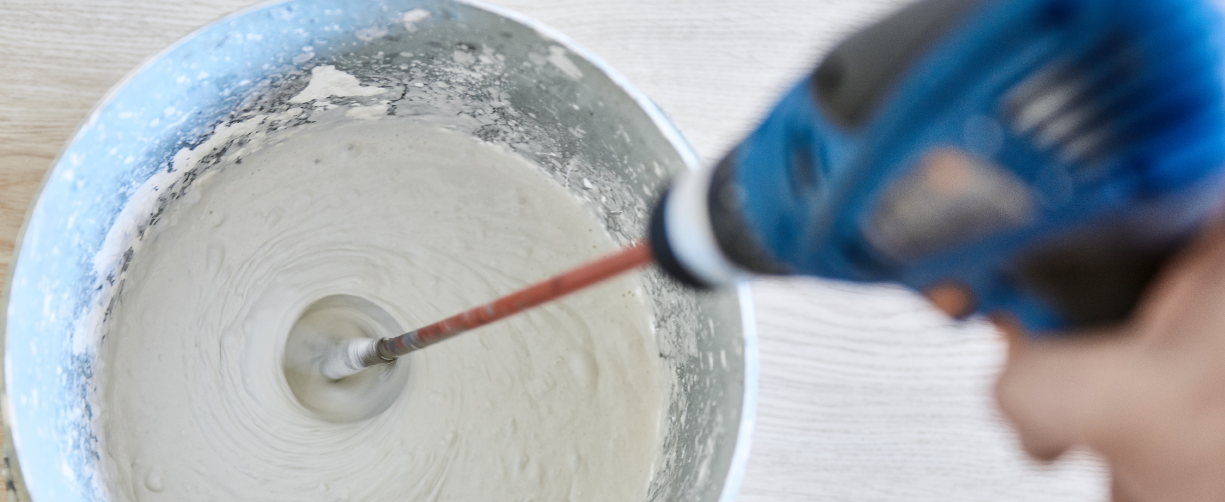Innovative Gel Adhesive Technology

Manufacturers of adhesives are constantly seeking new solutions. Since the market expectations regarding these products are very high, it should not be any surprise. Contractors want products offering not only durability but also comfortable and quick use. It is the pressure of time and money
which makes that contractors work at higher and higher temperatures and on more difficult substrates. In result they search for innovative technologies which provide safe and efficient work progress. Here comes Atlas response- Geoflex- new, highly flexible gel adhesive. Thin-layer and thick-layer bonding and filling The adhesive can be used within the range between 2 and 15 mm of layer thickness. It enables tofix the tiles either on thin or thick layer of adhesive. In addition, one can level uneven substrates. The combination of these factors significantly reduces the duration of tiling works. The contractor may use a single product both for fixing the tiles and filing uneven substrates either on walls or floors.
Perfect consistency - The second mixing is essential for the contractor, because it makes the adhesive elastic and smooth, Geoflex nicely sticks to a trowel and does not flow. Working with gel adhesive is a completely different experience in comparison to the conventional cement-based adhesives. It is not without reason that up to 80% of contractors, who had the opportunity to compare the operational parameters of our gel adhesive and cement adhesives during wide-scale validation testes, did admit that would probably never return to traditional cement-based adhesives.
Gel consistency and plasticity - An innovative technology of siliceous gel and special mixture of cements was used to create
Geoflex. Owning to a special admixture based on minerals (e.g. montmorillonite), the adhesive obtains an elastic and gel consistency when mixed with water. This greatly simplifies the application as the adhesive sticks well to a trowel and can be distributed easily. What one cannot
see with the naked eye is the inner water binding process. As mentioned mineral additives bind water with their molecular structure. Water ‘stored’ in such a way is then used to carry out the reaction of adhesive binding- hydration. What is interesting, if we add water to pure mineral mixture, such prepared compound could bind five times more water than it weighs. This absorption would result in the increase of compound volume by 1500%.
The additives in ATLAS Geoflex are selected so that they do not cause a significant increase in volume. The adhesive does not lose its
volume during drying. In addition, neither there is shrinkage, nor pulling effect. There is no problem to fix the tiles on the following day.
Strength and flexibility
Geoflex adhesive belongs to class C2TE- it represents the adhesives of: improved bonding, extended open time and reduced slip according to the EN 12004:2007+A1:2012 standard. High bonding and durability make it possible to use this adhesive within a very wide range of application:
in residential housing, but also in commercial, public access and healthcare buildings. Application area includes kitchens, bathrooms, laundry rooms, garages, terraces, balconies, loggias, as well
as showers, car washes, rooms frequently washed with plenty of water, communication routes or compartments with low and medium operational loads. Detailed application area is listed in the adhesive technical data sheet on www.atlas.com.pl/en
Perfect bonding to difficult substrates (including absorptive and isolated ones)
The improved water absorption of the mortar allows to fix tiles of any type- both absorbent and non-absorbent. The adhesive has also greater tolerance in view of the substrates absorption. Owning to this, Geoflex provides full bonding also in case of substrates which were not prepared
with proper diligence or on, so-called difficult substrates, such as concrete, terrazzo, old tiles (tile on tile technology) or OSB boards.
A very important adhesive feature, which results from the gel technology formula, is the possibility of application on substrates of increased temperature (e.g. screeds with underfloor heating or surfaces exposed to direct sunlight, such as balconies, terraces or loggias)- ambient temperature can reach up to 35C. In these cases, the mortar achieves the declared parameters also under the conditions which are beyond the temperature range recommended for traditional adhesives (up to
25C).The adhesive does not pull the tiles in. On the contrary, it just increases the bond strength to the substrate. Owning to this, the tiling works can be easily continued on the following day. What is more, Geoflex has much higher adhesion in low temperature in comparison to traditional cement adhesives.
Extended open time - The test was to see how the adhesives perform under the conditions of progressive open time. It is
more convenient for the contractor to prepare a larger area of wall or floor at once and then fix, the tiles without any doubts concerning the bonding of the adhesive. There was an identical fragment of wall prepared for each of the adhesives. Then the adhesives of the same thickness were applied
to the corresponding wall fragments. The test consisted in bonding the tiles and detaching them after 5 minutes. The result was given by the measured adhesion force of the adhesive. Subsequent tiles were bonded and detached from the substate after given time: 10, 15, 20, 25 and
30 minutes. Each time we measured the adhesion force. Tiles attached to the fresh adhesive (open time: 0) presented the highest adhesion. The adhesive of S1 class performed the best here. Tiles bonded to the wall on which the adhesive dried for 5 minutes gave worse result then the first
test by 0.1 MPa on average. More importantly, Geoflex result was almost identical with the one obtained by the adhesive of S1 class (0.325MPa), while the result of the competitive adhesive X was only 0.2 MPa! Nevertheless, the biggest difference can be observed between 10 and 20
minute since the application of the adhesive onto the wall. In the 10 minute, one can see that Geoflex adhesion is 0.07 MPa higher than the one shown by popular adhesive of S1 class. The adhesive which were compared to ATLAS Geoflex showed large drop in adhesion, white Geoflex was characterised by small decline of this parameter. In practice, this means that Geoflex gives us more time to fix, the tiles and that we can prepare a larger area of substrate at once.
Tight and durable packaging - The adhesive is packed in tight and weather resistant plastic bags. It is an innovation on the British
market for this type of products. Plastic bags effectively protect the mortar from getting wet when the goods are stored and limit the rate of weathering of cement which they contain. In addition, they eliminate dust which can be annoying in case of traditional paper bags.
Grouting just after 12 hours - The process of binding the water in the adhesive structure leads to full hydration, even if the
temperature of substrate and environment is high. When the process is finished, the rest of water is drained and evaporated. Paradoxically, proper amount of water trapped in the adhesive accelerates the adhesive drying process. The adhesive has the optimum conditions and the drying
process progress steadily and continuously. The binding is faster and stronger. This makes it possible to enter the floor after 12 hours (at room temperature) and start grouting. The excess of
water does not cause the efflorescence on the grout. The entire surface adheres well and is ready for the top finish. This enables a faster completion. The advantages of highly flexible gel adhesive ATLAS Geoflex
2 in 1 - good spread and no slip even in case of large size tiles- owning to very wide range of mix water volume (from 6.5 l up to 8.25 l per 25 kg of dry mix). It has been expanded in comparison tothe range required by traditional adhesives. One may adjust the adhesive operational parameters
to their own preferences and particular application areas.
Owning to this:
by adding the lowest recommended amount of water one obtains an adhesive with reduced slip and in result can fix the tiles “from top to bottom” without any support. This also applies to larger
and thicker tiles. Increasing the amount of water enables to change the operational parameters, in result we obtain
a pourable adhesive. By adding the highest recommended amount of water one gets an adhesive which perfectly fills the
space beneath large size tiles. It is particularly important in case of outdoor use. In parallel, gel adhesive properties do not cause the tiles pulling phenomenon (even large size tiles).
Source: www.atlas.com.pl/en






